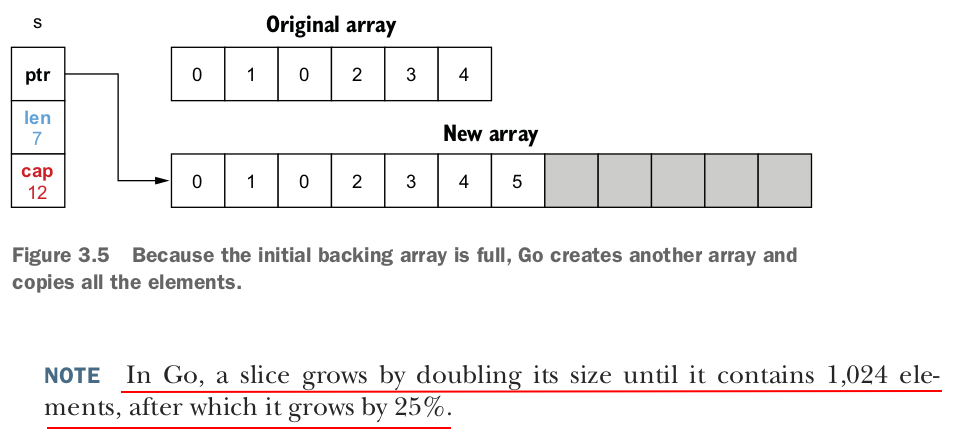
The slice now references the new backing array. What will happen to the previous backing array? If it’s no longer referenced, it’s eventually freed by the garbage collector (GC) if allocated on the heap.
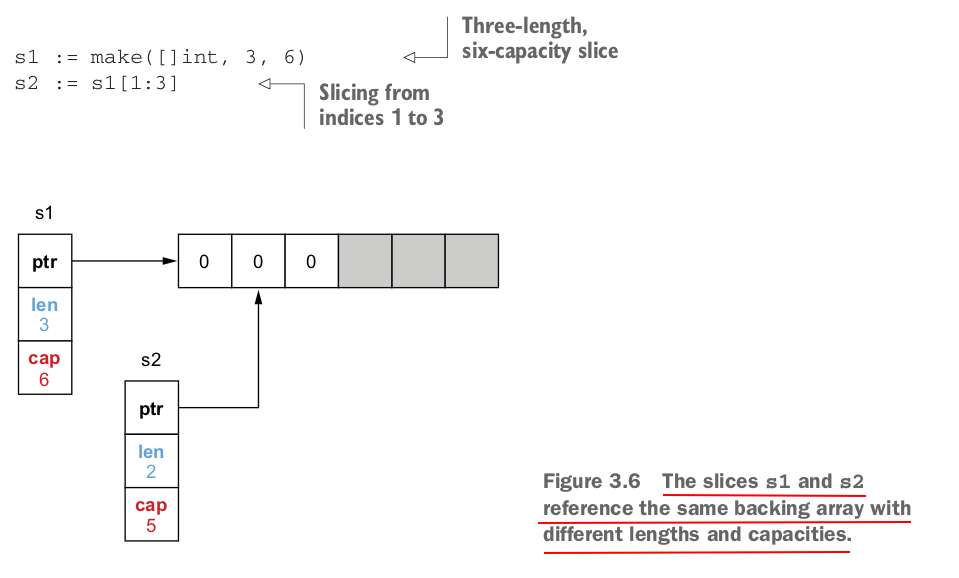
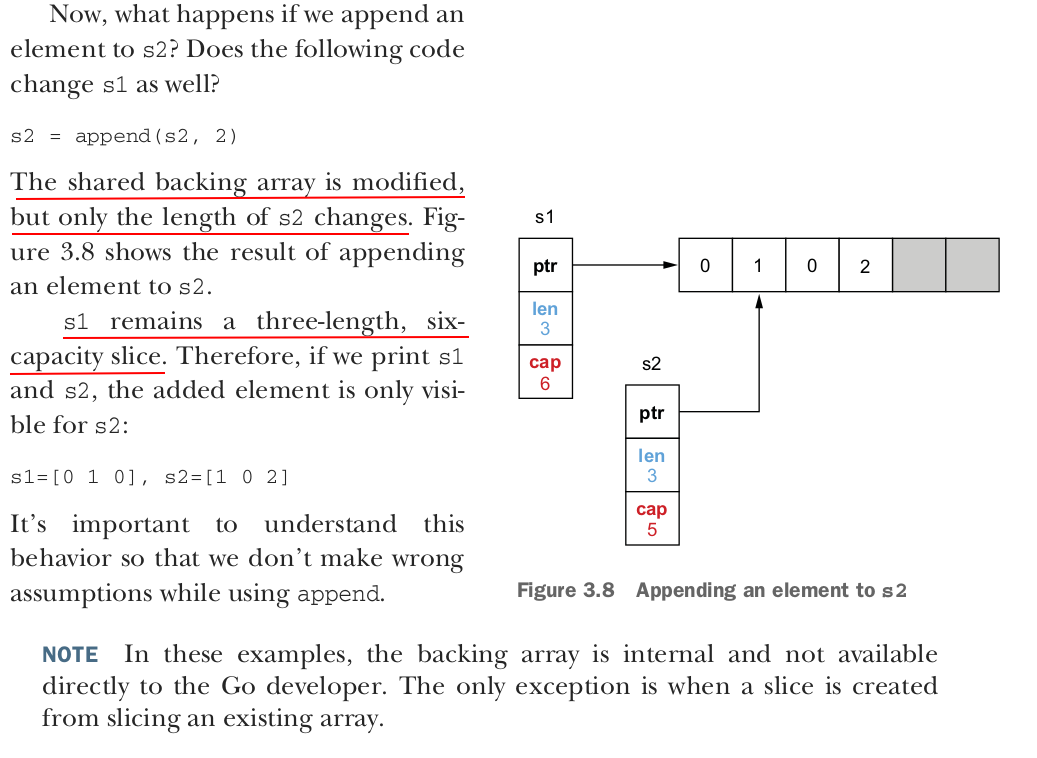


To summarize, the slice length is the number of available elements in the slice, whereas the slice capacity is the number of elements in the backing array. Adding an element to a full slice (length == capacity) leads to creating a new backing array with a new capacity, copying all the elements from the previous array, and updating the slice pointer to the new array.

func main() { var s []string log(1, s) s = []string(nil) log(2, s) s = []string{} log(3, s) s = make([]string, 0) log(4, s) } func log(i int, s []string) { fmt.Printf("%d: empty=%t\tnil=%t\n", i, len(s) == 0, s == nil) }
zzh@ZZHPC:/zdata/Github/ztest$ go run main.go 1: empty=true nil=true 2: empty=true nil=true 3: empty=true nil=false 4: empty=true nil=false
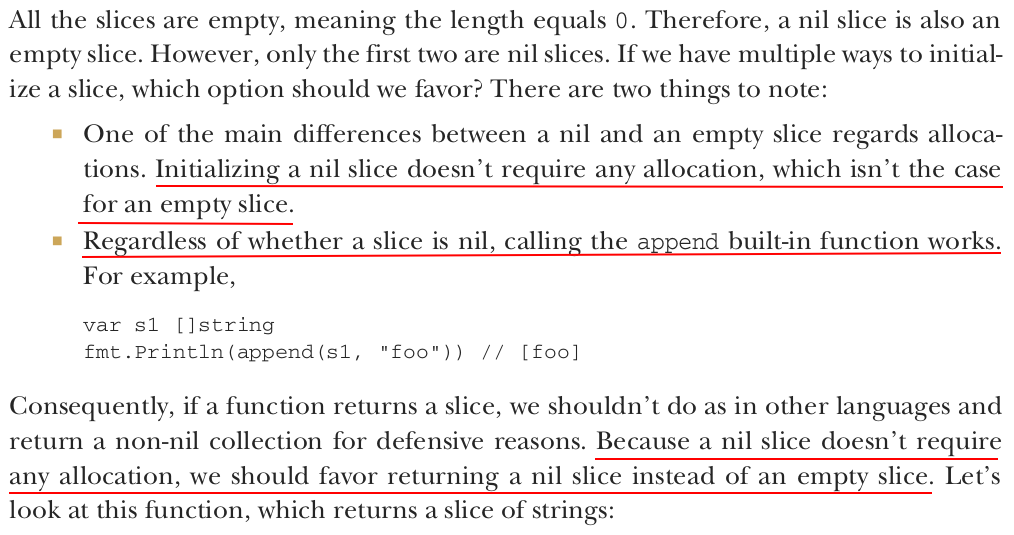

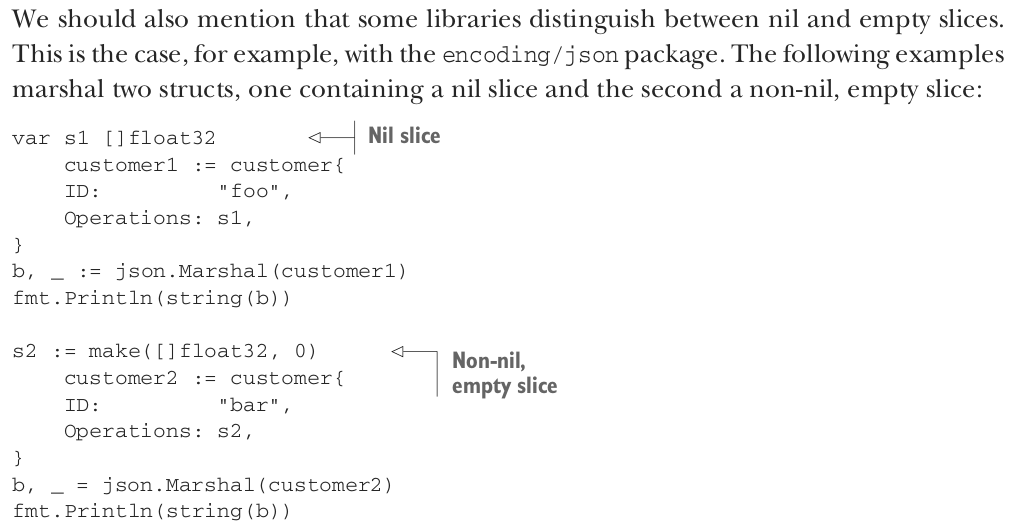
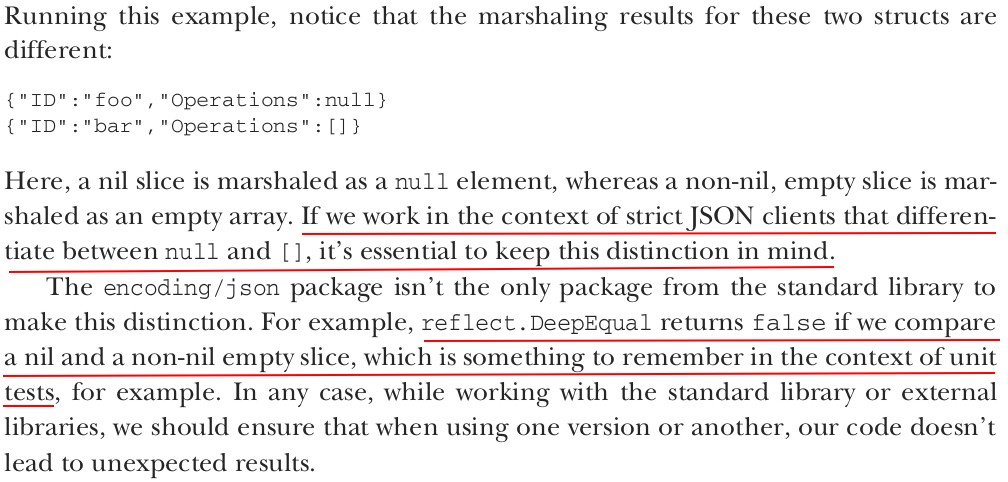
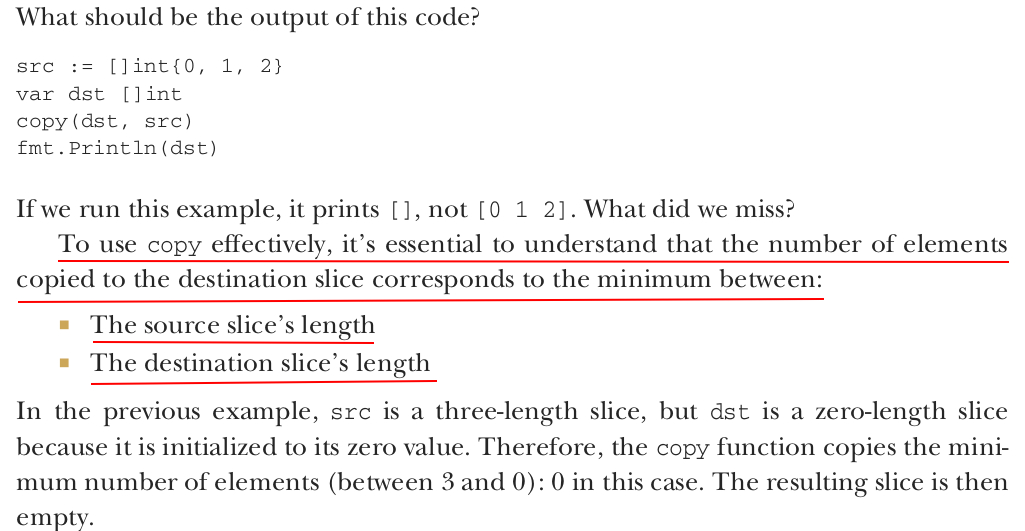
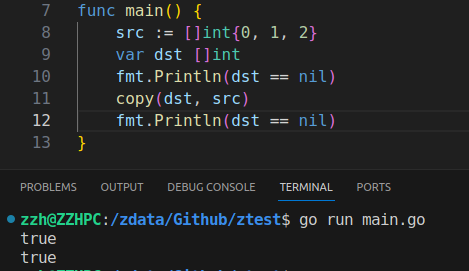





 浙公网安备 33010602011771号
浙公网安备 33010602011771号